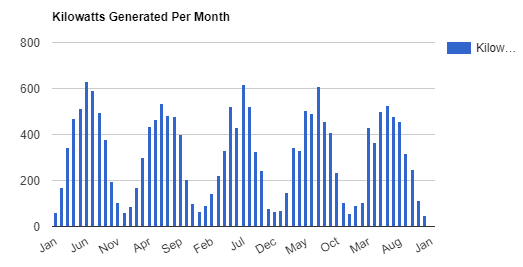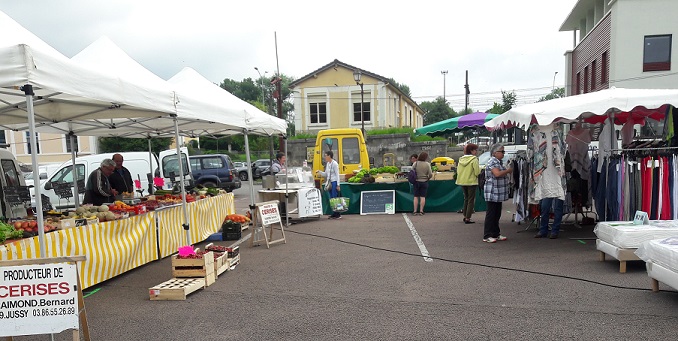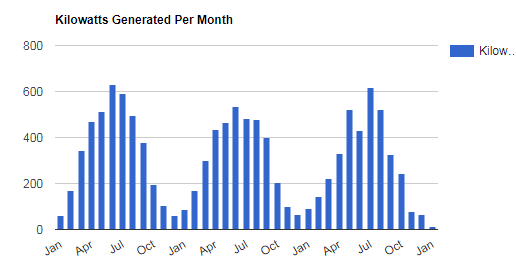I have just finished compiling my statistics for the 2020 solar year, and overall it was a good year. Production from my panels were down from 3591 kilowatts in 2019 to 3523 in 2020. Below is my monthly production since 2015:

In January, I noticed a couple panels quit producing, and Pacific NW Solar was able to reboot it remotely. In March I had a power inverter go out and it needed to be replaced, which Pacific NW Solar did under warrantee. I highly recommend to anyone installing a solar system to get the wireless reporting module, as that is how I detected the panels werent producing:

One of these days I will write a routine to automate the checking of production by panel, but in the meantime I just go out periodically and verify all is performing normally. Luckily the first outage was in January when production is almost non-existent anyway, and March when I am still not in peak production. Overall maintenance continues to be manageable. I am down to cleaning the panels once a year in spring (before peak production starts), and that seems to be enough to keep them producing at optimum production.
Payback Update
My current estimated payback year for this solar system is now targeted at the end of 2024. In reading thru all the incentive information, it appears 2020 was the last year for incentives for systems installed in 2015. This will take a huge chunk out of my annual revenue. I have a balance of about $1900 bucks to pay off to break even, and without the incentives the revenue my panels produce is estimated to be just over $450 a year. One positive from a production point of view is the marginal rate on electricity has now gone over $0.11 a kilowatt, so that will help the payback. Rates have risen much slower than I projected when I installed the panels, but I do anticipate rates to continue to rise.
Usage Update
In this year of working full time at home, its not surprising that I saw a big increase in usage. Our electrical usage was up 11% for the year after 3 previous years of slowing consumption. The amount of excess solar energy our panels returned to PSE (our electric utility) was also way down, indicating much more use during the day during peak production hours. Given that this work from home thing may be a permanent way of life, I don’t anticipate usage going back down to previous levels anytime soon.
I have no changes planned for my configuration, I just hope things keep humming along. As always, if you are considering an installation and have any questions for a solar system owner, feel free to leave a comment.




 No big box stores, every morning the Boulangeries are full of locals buying bread, every town seems to have a butcher to buy meat, and when the market comes to town the townspeople come out. It seems an anachronism in this day and age, but the model appears to be working. However, more towns are seeing more supermarket style stores in them, and the crowds in there seem younger, so maybe this style of retail will give way to the central supermarket. I think that would be a shame.
No big box stores, every morning the Boulangeries are full of locals buying bread, every town seems to have a butcher to buy meat, and when the market comes to town the townspeople come out. It seems an anachronism in this day and age, but the model appears to be working. However, more towns are seeing more supermarket style stores in them, and the crowds in there seem younger, so maybe this style of retail will give way to the central supermarket. I think that would be a shame.